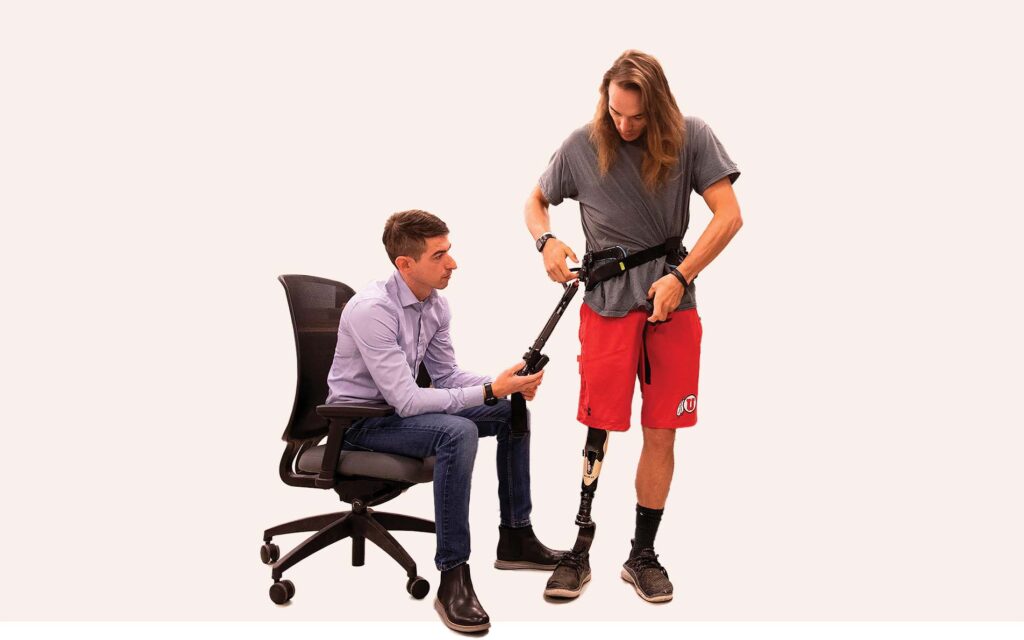Stan Schaar thought he would never again feel the sensation of effortlessly walking with two healthy legs. Then he tried out a new experimental exoskeleton developed by mechanical engineers at the U’s Bionic Engineering Lab. “It just felt like a big wind was behind me, pushing me down the road,” the 74-year-old Salt Lake County man says about using the new device.
Schaar is one of a half-dozen amputees who tested the new exoskeleton designed by a team of U researchers led by mechanical engineering assistant professor Tommaso Lenzi.
The exoskeleton, which wraps around the wearer’s waist and leg, uses battery-powered electric motors and embedded microprocessors, enabling an amputee to walk with much less effort. A standard prosthetic leg for amputees cannot fully replicate the biomechanical functions of a human leg. Consequently, above-knee amputees work harder while walking by overexerting their residual-limb and intact-limb muscles to compensate for the lack of energy from the prosthesis.
The goal of Lenzi’s exoskeleton is to provide that extra energy so walking feels natural again. The device features a lightweight electromechanical actuator connected to the user’s thigh above the amputation. A harness around the waist contains custom electronic systems, microcontrollers, and sensors running advanced control algorithms. “The exoskeleton’s AI understands how the person moves and assists,” says U mechanical engineering graduate student Dante A. Archangeli. The actuator can be swapped between the right and left side of the main harness to accommodate either leg.
For Schaar, the experience of using the exoskeleton was as close to having his own leg as anything, he says. “The first time I used it, it was like my muscles were totally fused with this exoskeleton, and it was helping them move faster,” says the retired computer administrator. Seven years ago, Schaar was helping his friend jump-start two pickups when one of the vehicles accidentally lurched forward, crushing Schaar’s leg. In the ensuing amputation surgery, and during a follow-up operation, doctors had to remove much of his leg muscles.
The exoskeleton could become more widely available in the coming years. A $985,000 grant from the U.S. Department of Defense funded the development of this new exoskeleton technology for the benefit of veterans. Lenzi also received a new $584,000 grant from the National Science Foundation.



Comments
Comments are moderated, so there may be a slight delay. Those that are off-topic or deemed inappropriate may not be posted. Your email address will not be published. Required fields are marked with an asterisk (*).